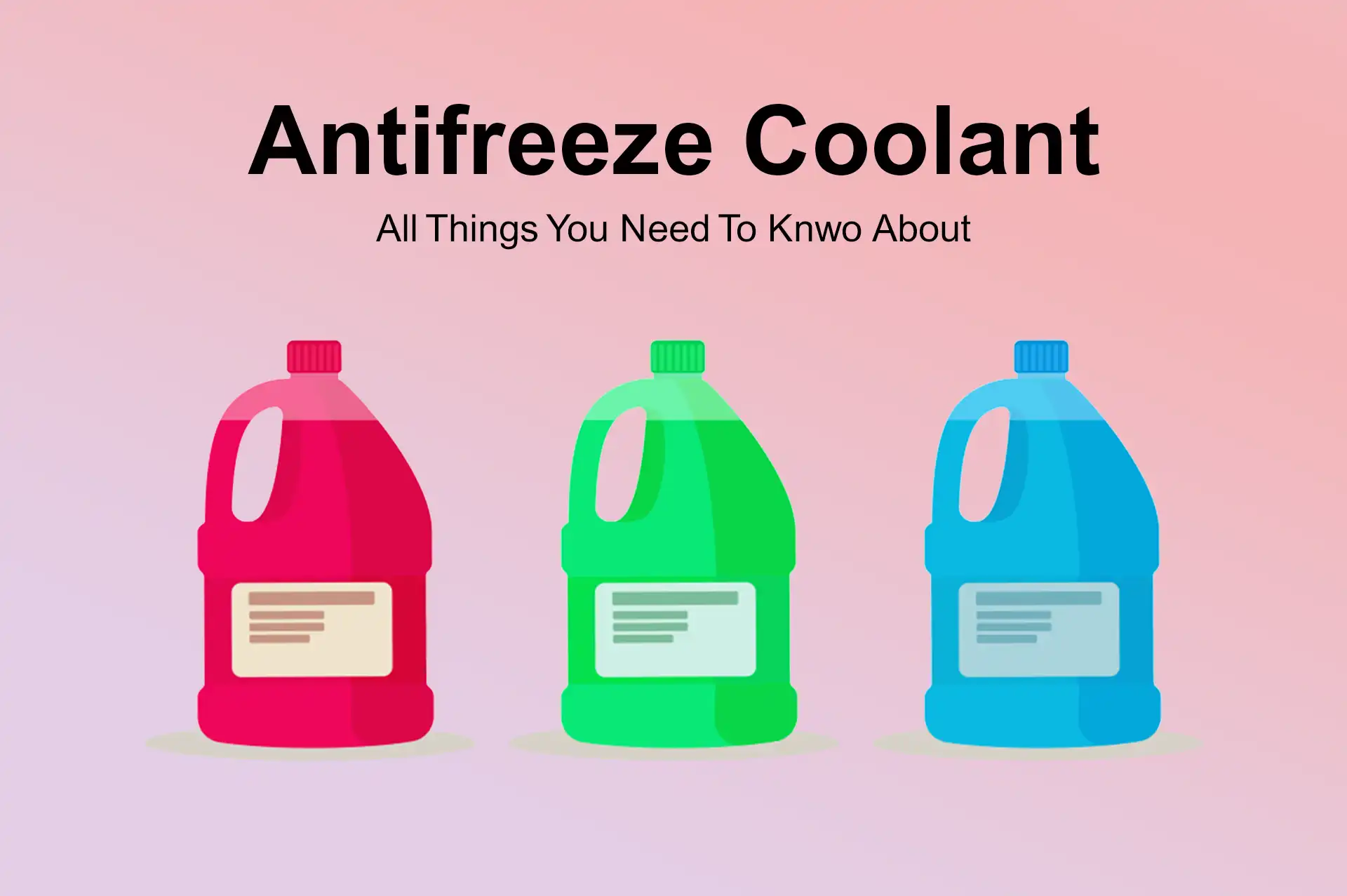If you are living in the coldest areas somewhere in Fairbanks, Alaska, or Siberia then this article would be a game changer for you as a car owner. Using ordinary water instead of antifreeze coolant in your car radiator is a fatal mistake. If the temperature goes below 0°C or 32°F, the water will freeze causing cracks in the engine block, hoses, or radiator tubing.
You know frozen water expands and this expansion may crack car radiator tubes. The car water pump malfunction and frozen water may limit the rotation of fluid in the running engine which leads to overheating and ultimately severe damage to the engine components.
You don’t know what is an antifreeze coolant and how important it is in your car? An overheating of your car engine will introduce it firmly to its importance someday. Well, despite waiting for an overheating catastrophe and costly repairs in return it’s better to know all things about the engine cooling system and what is an antifreeze coolant.
Introduction to Antifreeze Coolant
It is a special fluid in automobile engines or internal combustion engines. It regulates the temperature of the engine to a certain level to create an optimal operating environment for the engine. Antifreeze coolant prevents the engine from overheating and icing conditions.
A mixture of chemical compounds like ethylene glycol or propylene glycol with water plays a magical role in regulating engine block temperature. The antifreeze compound raises the boiling point of water and lowers the freezing point to ensure the engine performs better in both hot and cold weather conditions. Also, it protects the internal surface of the engine and radiator and other component’s corrosion and acts as a lubricating agent.
How Does Antifreeze Work?
The antifreeze incorporates anti-corrosive properties that protect engine cylinder and other metallic components from erosion. Antifreeze coolant properties are phenomenal and take care of your engine that simple water can’t even come closer.
Water with when mixed antifreeze lowers the freezing point and elevates the boiling point of water. Water without antifreeze compound could freeze and expand, this expansion could lead to engine block crack and damage water pump.
In cool weather areas, the optimal coolant water ratio is 50/50 for the water and antifreeze mixture.
Unique Properties of Antifreeze Coolant
Here are few properties of antifreeze coolant that makes is best choice for your car:
- Lower the Freezing Point: It lowers the freezing point of the water, and protects the water from the frosting effect. This anti-freezing property of the mixture ensures that the coolant remains in liquid form.
- Elevate the Boiling Point: The antifreeze vs coolant increases the boiling point temperature of the water, prevents the engine from overheating in hot conditions.
- Prevents Corrosion: The antifreeze compounds prevent metal parts of engine from corrosion, rust, and wear.
- It Acts as a Lubricant: It keeps cooling system components wet and lubricates the internals to protect the water pump from wear and tear.
- Thermal Conductivity: Antifreeze coolant transfers heat from the engine effectively and ensures optimal temperature to let the engine perform better.
- Anti-Foaming: Additives prevent foaming, ensuring the efficient circulation of the coolant in the system.
Antifreeze Types
Depending on their properties, antifreeze additives have different types. It solely depends on the vehicle requirements, manufacturer guidelines, and weather conditions. Checking engine coolant levels and replacing should be the core task of your vehicle maintenance schedule. Here are a few antifreeze types that you should be familiar with:
Conventional Coolant Additives: Conventional coolant additives, also known as Inorganic additive technology or IAT incorporate anti-corrosion properties. Manufactured with a mixture of chemicals such as nitrate, nitrite, borate, phosphate, silicate, and azole. You should replace IAT or conventional after every two years.
Organic Acid Technology OAT: The organic acid technology coolants come in red, orange, purple, or yellow colors. These are the typical chemistries of azoles and carboxylic acid. General Motors Company recommends using OATs in their vehicles. They are heavy-duty versions and are long-life coolants. The replacement cycle of OAT is lengthy and should be 2 to 5 years.
Hybrid Coolant Additives: With modernization in the coolant additive technology, hybrid coolant additives have produced synergistic effects in recent days. Hybrid coolant additives are a mixture of organic inhibitors with inorganic additives that enhance corrosion protection and higher heat exchange than other kinds. Most of the portion contains organic acids and some quantity of inorganic ones such as phosphate, silicate, nitrate, or molybdates inhibitors. Use Nitrite for heavy-duty erosion. Hybrid vehicle manufacturers recommend the use of this type of coolant additive.
How to Check the Coolant Level in Car
You should check your car coolant levels after every three to six months. It’s a DIY thing that takes merely a few minutes of you. We have written a complete guide on how to check engine coolant in your car better refer to that article. Checking the coolant level should be the mandatory part of your schedule inspection list and it’s easy. Just pull your car bonnet opening button and open the car bonnet. See through the semitransparent coolant reservoir and check the FULL and LOW markings. If the coolant level is below the LOW marking then add the suitable coolant in the reservoir until the FULL marking.
How to Replace the Car Antifreeze Coolant at Home
The condition of the antifreeze coolant can only be verified by opening the radiator cap. Let the engine properly cool down before opening the radiator cap to avoid injury or burns. The radiator inlets may cause coolant to blow out when it gets hot and gets pressurized. Wear safety gloves and open the radiator cap gently. If the coolant becomes brownish or colorless then replace it with the manufacturer-recommended antifreeze coolant.
Mostly the antifreeze coolant comes with premixed form so don’t have to mix them at home. Otherwise, mix the antifreeze and water in half-half proportion if you live in cold weather and 80 percent water and 20 percent antifreeze in hot weather areas.
Cooling System Purging
Purge the system completely while refilling to avoid air accumulation in the cooling system. Fill the radiator with the antifreeze coolant completely and switch ON the engine. Monitor the coolant level in the radiator and pour the coolant until you see no air bubbles at the radiator inlet. Intact the radiator cap and now fill the coolant reservoir up to the FULL mark line.
What is Antifreeze Coolant used for?
Antifreeze coolant is a liquid used in the engine cooling system of automotive and internal combustion engines to regulate the engine temperature to a certain level for engine optimal performance. Antifreeze alone is a substance mixed with water in a specific proportion mostly 50/50, that prevents the engine from overheating and freezing effect in cold weather conditions.
What is the difference between antifreeze and engine coolant?
The key difference between antifreeze and engine coolant is simple. The coolant is a liquid that is filled in the radiator and removes the engine heat. Antifreeze is an additive substance mixed with coolant to overcome freezing in cold weather. However, both are fluids but coolants can be tap water, but antifreeze is the chemical material when mixed with water forms an ideal liquid known as antifreeze coolant.
What is 50 50 Antifreeze coolant?
Antifreeze additive when diluted with water in half-half ratio is known as 50-50 antifreeze coolant. The 50/50 antifreeze coolant is suitable for your car if you are living in cold areas. Otherwise, mix 20 percent antifreeze additive with 80 percent water in hot areas such as the Middle East and Asian regions where summer is longer than winter.
What is the color of Antifreeze coolant?
Antifreeze coolants usually come in green, pink, red, and yellow colors depending on the additives and specifications. Green antifreeze coolants are IATs with low replacement intervals and the red, pink, and yellow are OATs that are long life and suitable for modern cars.


